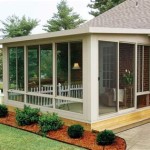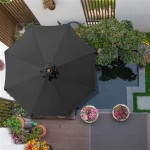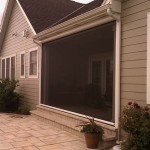Illuminating Your Outdoor Space: A Comprehensive Guide to Solar Patio Lights With Remote
Solar patio lights offer an energy-efficient and aesthetically pleasing solution for illuminating outdoor living areas. With the advancement of technology, solar patio lights equipped with remote controls have become increasingly popular, providing enhanced convenience and customization. This article delves into the features, benefits, and considerations associated with solar patio lights with remote, offering a comprehensive guide for prospective purchasers and users.
Understanding the Core Components
Solar patio lights with remote comprise several key components working in concert to deliver illumination. The primary elements include the solar panel, rechargeable battery, LED light source, control circuitry, and the remote control itself. Each component contributes significantly to the overall performance and functionality of the lighting system.
The solar panel, typically constructed from silicon-based photovoltaic cells, converts sunlight into direct current (DC) electricity. The efficiency of the solar panel, measured as the percentage of sunlight converted into electricity, is a critical factor in determining the charging capacity and overall performance of the lights. Larger solar panels with higher efficiency ratings are generally more effective at capturing sunlight, even in partially shaded conditions.
The rechargeable battery stores the electrical energy generated by the solar panel. Lithium-ion (Li-ion) batteries are commonly used in solar patio lights due to their high energy density, relatively long lifespan, and ability to withstand multiple charge and discharge cycles. The battery capacity, measured in milliampere-hours (mAh), determines the runtime of the lights. A higher mAh rating indicates a larger energy storage capacity and consequently, a longer illumination period.
The LED light source provides the actual illumination. LEDs are preferred over traditional incandescent or halogen bulbs due to their energy efficiency, long lifespan, and durability. LEDs consume significantly less power for the same light output, contributing to longer battery runtime. The color temperature of the LEDs, measured in Kelvin (K), affects the ambiance of the lighting. Warmer color temperatures (e.g., 2700K-3000K) create a cozy and inviting atmosphere, while cooler color temperatures (e.g., 5000K-6000K) provide brighter and more focused illumination.
The control circuitry manages the charging and discharging of the battery, regulates the light output, and interprets signals from the remote control. This circuitry ensures optimal battery performance and prevents overcharging or over-discharging, which can damage the battery. The remote control communicates with the control circuitry via radio frequency (RF) or infrared (IR) signals. RF remotes typically offer a longer range and do not require a direct line of sight, while IR remotes require a clear line of sight between the remote and the receiver.
Benefits of Using Solar Patio Lights with Remote
Solar patio lights with remote offer several advantages over traditional outdoor lighting solutions. These benefits extend beyond mere illumination, encompassing convenience, energy efficiency, and cost savings.
One of the primary benefits is the convenience afforded by the remote control. The ability to remotely control the lights from a distance eliminates the need to manually switch them on or off, offering enhanced comfort and ease of use. This is particularly useful for controlling lights placed in hard-to-reach areas or for adjusting the lighting without leaving the seating area.
Many solar patio lights with remote offer dimming capabilities, allowing users to adjust the brightness of the lights to create the desired ambiance. This feature can be particularly useful for setting the mood for different occasions, such as romantic dinners, casual gatherings, or relaxing evenings. Some models also offer color-changing functionality, allowing users to select from a range of colors to further customize the lighting experience.
Solar patio lights are inherently energy-efficient, as they rely on solar energy for power. This eliminates the need for external power sources, reducing electricity consumption and carbon footprint. The use of LEDs further enhances energy efficiency, as LEDs consume significantly less power than traditional light bulbs. The energy savings translate into lower electricity bills and a reduced environmental impact.
Solar patio lights also offer cost savings in terms of installation and maintenance. Unlike traditional wired lighting systems, solar patio lights do not require extensive wiring or professional installation. This significantly reduces the initial installation costs. Furthermore, the long lifespan of LEDs and rechargeable batteries minimizes the need for frequent replacements, resulting in lower maintenance costs over the long term. The absence of wiring also eliminates the risk of electrical hazards associated with traditional outdoor lighting.
The portability and flexibility of solar patio lights are other notable benefits. Since they do not require external power sources, solar patio lights can be easily moved and repositioned to suit different needs. This makes them ideal for renters or individuals who frequently rearrange their outdoor spaces. The lights can be used in a variety of settings, including patios, decks, gardens, balconies, and even camping trips.
Key Considerations When Selecting Solar Patio Lights with Remote
Choosing the right solar patio lights with remote requires careful consideration of several factors. These factors include the solar panel efficiency, battery capacity, light output, remote control functionality, weather resistance, and overall design.
The solar panel efficiency is a critical factor in determining the charging performance of the lights. A higher efficiency rating indicates that the panel is more effective at converting sunlight into electricity, resulting in faster charging and longer runtime. It is advisable to choose lights with solar panels that have an efficiency rating of at least 17% for optimal performance. The size and orientation of the solar panel should also be considered, ensuring that it receives adequate sunlight throughout the day.
The battery capacity determines the runtime of the lights. A higher mAh rating indicates a larger energy storage capacity and consequently, a longer illumination period. It is important to choose lights with a battery capacity that meets the desired runtime requirements. Factors such as the light output, dimming level, and ambient temperature can affect the battery runtime. It is recommended to select lights with batteries that have a capacity of at least 2000 mAh for extended illumination.
The light output, measured in lumens (lm), determines the brightness of the lights. A higher lumen rating indicates a brighter light output. The appropriate light output depends on the intended use of the lights and the size of the area to be illuminated. For ambient lighting, a lower lumen output (e.g., 50-100 lm) may be sufficient, while for task lighting, a higher lumen output (e.g., 300-500 lm) may be required. The color temperature of the LEDs should also be considered, as it affects the overall ambiance of the lighting.
The remote control functionality is another important consideration. The remote should offer intuitive controls and a sufficient range. Features such as dimming, color changing, timer settings, and multiple lighting modes can enhance the user experience. The type of remote control, whether RF or IR, should also be considered based on the intended use and environment. RF remotes offer a longer range and do not require a direct line of sight, while IR remotes require a clear line of sight.
Weather resistance is essential for outdoor lighting. Solar patio lights should be designed to withstand exposure to rain, snow, and sunlight. Look for lights with an Ingress Protection (IP) rating of at least IP44, which indicates protection against splashing water. Lights with a higher IP rating, such as IP65 or IP67, offer greater protection against water and dust ingress. The materials used in the construction of the lights should also be durable and resistant to corrosion and UV degradation.
The overall design of the solar patio lights should complement the aesthetic of the outdoor space. Lights are available in a variety of styles, including string lights, path lights, spotlights, lanterns, and decorative accents. Consider the color, shape, and size of the lights to ensure that they blend seamlessly with the surroundings. The mounting options should also be considered, as some lights can be easily hung, while others require more permanent installation.
Warranty and customer support are important factors to consider when purchasing solar patio lights. A reputable manufacturer should offer a warranty that covers defects in materials and workmanship. It is also advisable to check customer reviews and ratings to assess the reliability and performance of the lights. Responsive customer support can be helpful in resolving any issues or concerns that may arise.

Szrsth 210 Led Outdoor Solar Lights Waterproof Motion Sensor Wireless Control Flood Walmart Com

52ft Usb C Outdoor String Patio Lights With 15 1 Bulbs Waterproof Sh
:max_bytes(150000):strip_icc()/RSP_OVERALLGROUP-3x2-1-6eabfef1f5004599a65e1abb871290ed.jpeg?strip=all)
The 8 Best Outdoor Solar Lights Of 2024 Tested And Reviewed

Addlon Solar Patio Lights Waterproof Camping Backyard Led String Ligh

52ft Solar String Lights Outdoor With Remote Warm White

Topchances 48ft Solar String Lights Waterproof Patio With Usb Port Remote Control 4 Lighting Modes 50 2 Led Shatterproof Bulbs Outdoor For Camping Backyard Garden Walmart Com

Sunforce Solar String Lights With Remote Control Unboxing And Review Youtube

The 3 Best Smart Outdoor Lights For Backyards Of 2024 Reviews By Wirecutter

Color Changing Solar String Lights Outdoor With Remote
:max_bytes(150000):strip_icc()/PEO_HomeZoneSecuritySolarWallLanternLights2-Pack-DB_021-c031960d363b49f3b5a48949804167a9.jpg?strip=all)
The 7 Best Outdoor Solar Lights Of 2024 Tested And Reviewed








